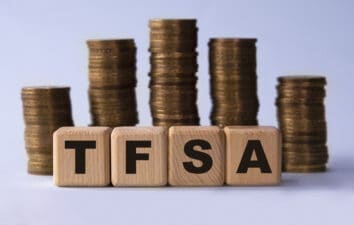The RRSP is the cornerstone of most Canadians’ retirement plans. Although its popularity has been waning in recent years, the RRSP still has the most retirement funds sitting in it out of all Canadian retirement accounts. According to a 2013 CBC story, there were $772 billion in RRSP assets all the way back in 2011. In 2018, there were only $298 billion in assets in TFSAs — the closest available alternative.
So, despite the rapid rise in the popularity of TFSAs, the RRSP remains the biggest retirement savings account for Canadians. Indeed, with its higher maximum annual contribution, the RRSP may hold the top spot for the foreseeable future.
That doesn’t mean the RRSP is better than the TFSA, though. To the contrary, the TFSA has many benefits that may make it better than the RRSP — particularly for Canadians who are already 71 years of age or older. In this article, I will explore the three main reasons why, for many Canadians, the TFSA beats the RRSP.
Reason #1: Tax-free withdrawals
The most obvious advantage that TFSAs have over RRSPs is that their withdrawals aren’t taxable. With an RRSP, you have to pay your marginal tax rate on any withdrawals. You also have to pay a withholding tax if you withdraw early. With a TFSA, you never have to pay either tax — assuming you kept your contributions within the limit. So, TFSAs let you keep a higher percentage of your returns than RRSPs do.
Reason #2: Contribution limits aren’t tied to income
A second benefit TFSAs have over RRSPs is that their contribution limits aren’t tied to the contributor’s income level. Your RRSP limit is generally 18% of your income for the year, up to a max of $29,000. With the TFSA, there is no limit on the percentage of income you contribute. So, if you’re a low-income Canadian with high savings, you could easily put 50% of your income in a TFSA in one year. With an RRSP, that’s not possible.
Reason #3: You can keep contributing to a TFSA after you retire
The third and final reason TFSAs beat RRSPs is that TFSAs let you keep saving after you retire.
You have to withdraw from your RRSP at age 71. It doesn’t matter how much you have saved, when you hit 71 years of age, you have to convert your RRSP to a RRIF and make mandatory annual withdrawals. With the TFSA, you do not have to do this. So, the TFSA lets you keep saving tax free for a longer period of time than the RRSP does.
Let’s imagine that you’re a 71-year-old retiree with $20,000 saved. You’ve been reading about iShares S&P/TSX Capped Composite Index Fund (TSX:XIC) and decided that you want to invest in it. You think it would be a perfect investment to hold for your retirement due to its low fees and high diversification. There’s only one problem…
You can’t contribute to your RRSP anymore. Because you’re 71, you’re in the automatic withdrawal phase.
If an RRSP is the only retirement account you have, that’s pretty much all there is to it. There is no way to contribute to an RRSP past 71 and avoid automatic withdrawals. But if you have a TFSA, you can keep contributing for as long as you want and continue investing in XIC. So, if you’re an older Canadian, a TFSA may be just the ticket.








